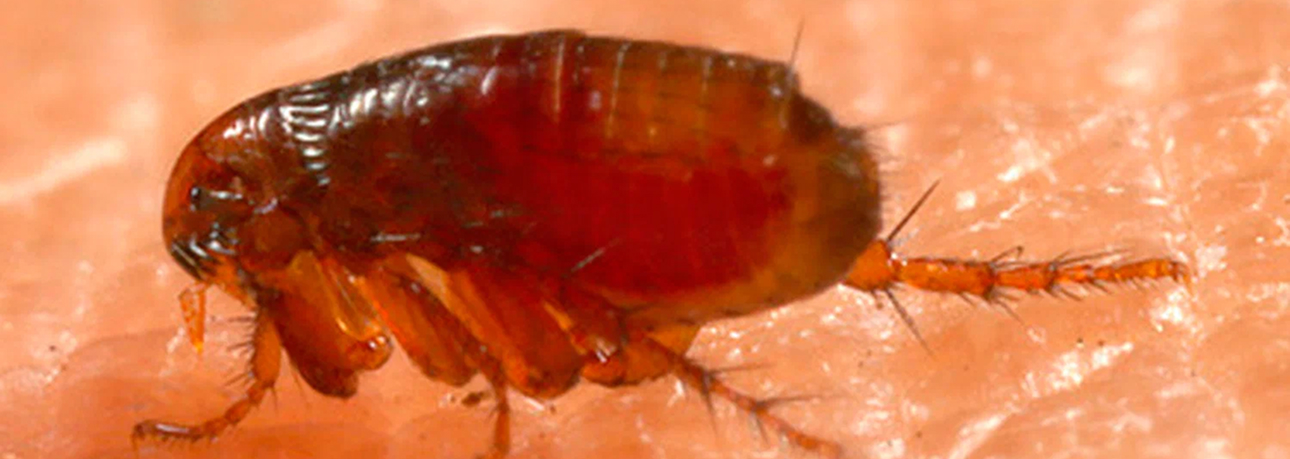Flea Pest Control Services
Fleas in Orange County, California:
Identification, Behavior, and Control Methods
Fleas are one of the most troublesome pests for both homeowners and pet owners. These tiny, blood-feeding parasites can quickly infest homes, causing discomfort for pets and humans alike. In Orange County, flea infestations are common due to the warm climate, making year-round prevention crucial. Understanding their behavior, habitats, and control methods can help keep these pests at bay.

Flea Identification
What Do Fleas Look Like?
- Fleas are small, wingless insects, typically 1-3 mm in length.
- They have flattened bodies, allowing them to move easily through fur and carpets.
- Their strong hind legs enable them to jump long distances.
- Adult fleas are reddish-brown and feed on the blood of mammals and birds.
Flea Life Cycle
Fleas have a four-stage life cycle, which makes them difficult to eliminate without thorough treatment:
1. eggs
Laid on pets or in carpets, bedding, and upholstery, flea eggs hatch in 2-12 days.
2. Larvae
Tiny, worm-like larvae avoid light and burrow into carpets and crevices, feeding on organic matter.
3. Pupae
Fleas cocoon themselves in this stage, making them resistant to pesticides.
4.Adult Fleas
Fully developed fleas emerge and immediately seek a host to feed on, restarting the cycle.
Where Do Fleas Live?
Fleas thrive in warm, humid environments, often found in:
- Pet bedding, furniture, and carpets.
- Cracks and crevices in flooring.
- Yards, especially in shaded areas where pets rest.
- Wildlife nests, such as those of rodents or stray animals.
Signs of a Flea Infestation
- Pets excessively scratching, biting, or grooming themselves.
- Small, red bites on human ankles and legs.
- Flea dirt (black specks) found in pet fur or bedding.
- Spotting fleas jumping in carpets or furniture.
Key Takeaways and Control Methods
Flea infestations can escalate quickly, making proactive control essential. Here’s how you can prevent and eliminate fleas:
Treat Pets Regularly
Use veterinarian-recommended flea preventatives such as topical treatments, oral medications, or flea collars.
Vacuum Frequently
Pay special attention to carpets, furniture, and pet bedding to remove eggs and larvae.
Wash Bedding and Fabrics
Regularly wash pet bedding, blankets, and rugs in hot water to kill fleas at all stages.
Maintain Your Yard
Keep grass trimmed, remove debris, and use flea treatments in outdoor areas where pets roam.
Use Flea Control Products
Apply flea sprays, foggers, or diatomaceous earth to eliminate infestations in the home.
Professional Pest Control
For severe infestations, professional treatments ensure effective and long-term flea elimination.
Treat Pets Regularly
Use veterinarian-recommended flea preventatives such as topical treatments, oral medications, or flea collars.
Vacuum Frequently
Pay special attention to carpets, furniture, and pet bedding to remove eggs and larvae.
Wash Bedding and Fabrics
Regularly wash pet bedding, blankets, and rugs in hot water to kill fleas at all stages.
Maintain Your Yard
Keep grass trimmed, remove debris, and use flea treatments in outdoor areas where pets roam.
Use Flea Control Products
Apply flea sprays, foggers, or diatomaceous earth to eliminate infestations in the home.
Professional Pest Control
For severe infestations, professional treatments ensure effective and long-term flea elimination.
If fleas are becoming a persistent issue in your home, our pest control experts are here to help. We offer targeted treatments designed to eliminate fleas at every stage of their life cycle. Contact us today to protect your family and pets from these biting pests!
our services
Simple Solutions To Complex Problems at an Affordable Rate

Residential
We offer a variety of plans custom fit for your needs! Whether its an endless trail of ants, or strange noises in the walls, we’ve got your pest control needs covered!

Commercial
We can stop pests from causing costly machinery repairs, fines, closures, and damage to your reputation!

rodents
Various species of rats and mice inhabit the Orange County area. Remove rodents from your home permanently with our exclusion services.

mosquito
We use the In2Care system to eliminate mosquitoes where they breed—protecting your family’s health and comfort.

